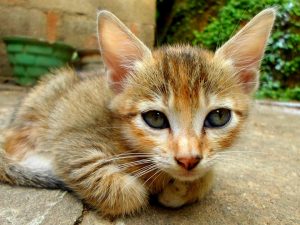Down syndrome in cats
Like in humans, Down syndrome in cats is possible. This disease is a genetic anomaly that results in a detectable chromosomal defect in the DNA. It is important in these situations to know how to recognise the symptoms if you suspect your pet has some form of Trisomy. The best is if you have the slightest doubt to go to a veterinarian who can direct you and make a precise diagnosis. Once the pathology is established, it is essential to adopt a change in routine. You must adapt to allow your adorable feline to live his now partially limited life as comfortable and peaceful as possible.Trisomy in cats
Animals, like us, have genetic sequences ordered in chromosomes. When a chromosome pair has an abnormality it means that the cat has a form of trisomy. Some signs can alert you to such an eventuality and lead you to have tests done by a feline health professional. Anyway, it is not necessary to panic. The best thing to do is to act in stages.How to recognise Down syndrome in cats?

Big ears may suggest Down syndrome.
Down syndrome in cats leads to what changes in habit?
Once again, just like humans, it is quite possible to adapt to this difficult situation. For example, a cat with Down syndrome will need more attention than a cat with no pathology. Very often Down syndrome cats can be very affectionate and very in demand. The most complicated will be to set limits to behaviours that are similar to nonsense. Indeed, it will be necessary to differentiate between the symptoms of the disease and not exceed the limits of your pet. This is the most delicate aspect of Trisomy. Cats suffering from this anomaly often have excessive behaviour in many areas. As for individuals, the evolution of your cat will not be the same as that of a cat in perfect health. It can be very turbulent at times and hug over others. You will need to be very attentive and observe his behaviour to best meet his expectations. Many playing with him is already a great alternative. Not only will this channel a little more energy, but it will also give him all the attention he needs. As for reprimands, don’t stop them. There are certain limits to be set. Everything is done with respect and gentleness so as not to scare your cat and not break the bond of affection he needs.
And do not forget, a happy cat is a healthy cat. So prevent its possible dehydration with our fountains.

